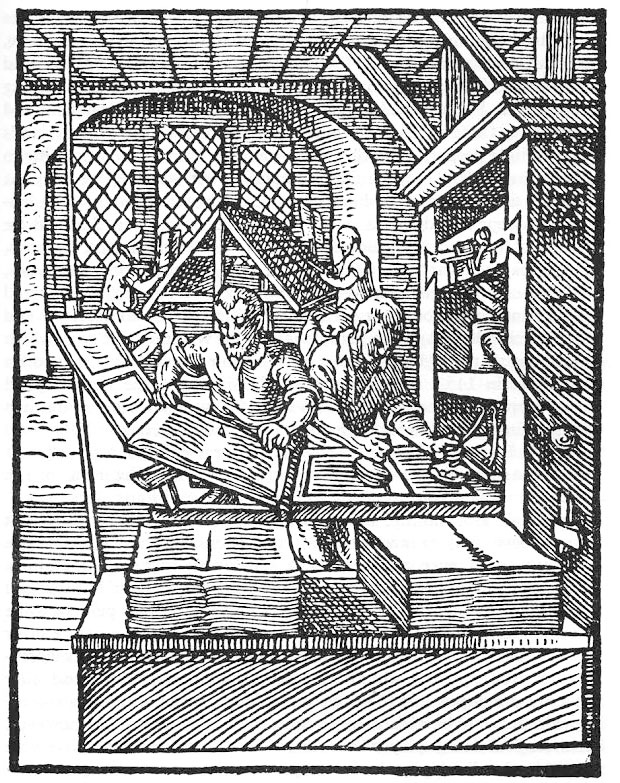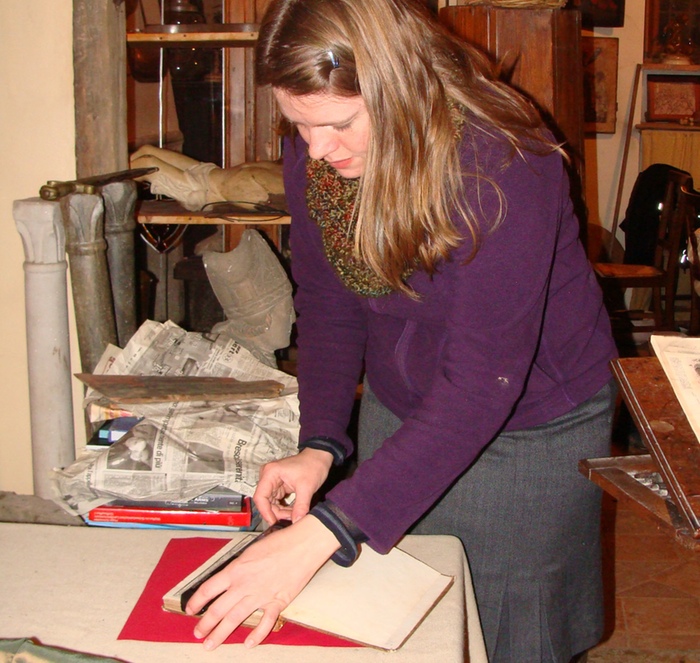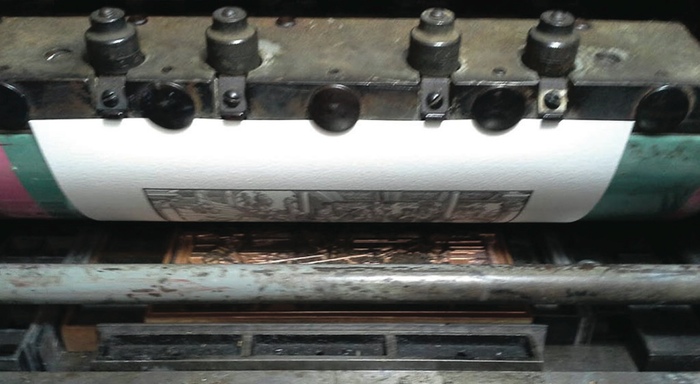Adelheid Zimmerman is a freelance designer, artist, maker, fencer, gamer, and more, residing in Madison, Wisconsin. We first encountered her work last year when she ran a project for the restoration of sixteenth-century German longsword illustrations — a project that also caught the eye of 239 backers. She returned this year with a companion project, a restoration of Marozzo’s side sword illustrations from 1536, which is currently live. We asked Zimmerman to talk to us about what exactly goes into restoration of this sort.
I have taken on a project to restore and reproduce the illustrations from Achille Marozzo’s Opera Nova. There are two reasons that I find this project fascinating. I love that I am putting into the hands of historical European martial artists the images that the masters taught from in the form that they were intended. On a more personal level, I enjoy the artistic investigation of the restoration and visceral pleasure of producing that art in a historical manner.
When Marozzo needed illustrations for his fencing manual, he would have gone to an artist for sketches. When a final draft was approved, it was transferred to wood and carved by a highly skilled tradesman who would then remove the negative space from a specially prepared block of hardwood. These engravings and a manuscript of the text were taken to the printer who laid out the lead type and woodblocks, which were then printed onto pages that could be folded into signatures.

The making of these modern day reproductions happens in a slightly different manner from the originals 400 years ago. Instead of beginning with an artist/draftsman, I am beginning with a scan or photograph of the original print. In January, I traveled to Italy for this first step in the restoration and reproduction process.

Once I got home, I started the digital restoration. For each illustration, I open the scan into Photoshop, remove all of the color information, remove anything that was paper, and make an initial pass at smoothing out the variances in line caused by both digital algorithms and inconsistent application of ink in the original. Thus I have prepared my canvas and can begin the real work.
The rest of the process is spent zooming in and out, darkening pixels or removing them. First I tidy up the border and remove artifacts. Next, I adjust for a curve or wrinkle in the paper. For the process of cleaning up the detail of the image, I am constantly mindful to hide my own hand and keep to the style of the original artist. I call upon my knowledge of how the thick, sticky ink of a letterpress coats an image and how the pressure and absorbency of the paper pulls it off. Using the brush and eraser tools, I fill in where a line must have been drawn and erase where a carving knife must have removed the wood of the block. My block, my ink, my paper, and my press are all slightly different than the originals. I make a few choices in line weight to compensate for these differences.

When my digital files are ready, I send them off to an engraver. Instead of a woodcarver like those responsible for the originals, I utilize a die manufacturer well known for their high quality service as well as environmentally and socially responsible practices. They take my digital file and use it to carve the drawing out of copper with a chemical process. They then have a trained engraver go back over the image with fine tools to make sure that it is perfect before sending it to me.

When I get the copper plate from the engraver, I lock it up in my letterpress, ink the plate, and press the paper. The printing process sounds simple, but is a matter of technique and finesse. The press needs to be adjusted for each print run depending on the thickness of the plate and the paper. Even incredibly small variances in the pressure of the plate against paper make huge differences in the quality of the print. After each print the thickness of the ink application changes slightly. And even the slightest shift in the paper can produce a visible shift in the registration.

After the prints are pulled and the ink has dried, I go back over them and discard any that are not of a sufficiently high quality. The prints are sorted in order of quality, then labeled and numbered. If a print run produces 20 quality prints, the one of highest quality is labeled 1/20. In pencil on the back, I note what the image is, the name of my press, and the print’s number. A few of them then get hand painted, just as a few of them would have been 500 years ago. This hand painted print is from my previous restoration and reproduction project:
When all of the prints are made, I carefully wrap them up and send them out to the patrons who have supported my project. One of my favorite parts of this process is when any of my patrons write me a note to tell me how much they enjoy their prints. Next, I’ll begin digitally restoring another segment of this book and start looking forward to the printing, painting, and posting of another round of reproductions.
This post was originally published on this site

No Comment